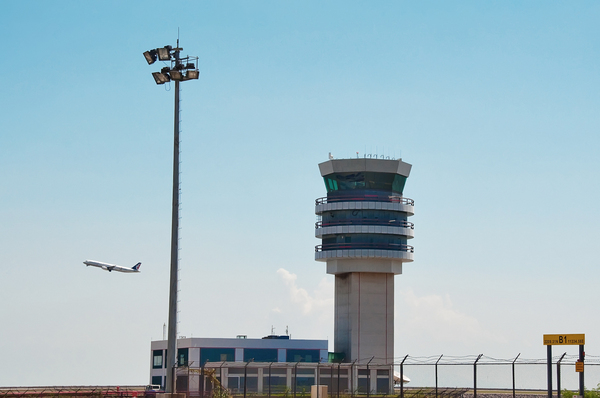
In places worldwide, the air traffic volume continues to increase. However, the conventional navigation relies heavily on the ground navigation waypoints; the design of air routes and flight procedures has therefore often been restricted by the configuration of the waypoints and the various navaids. This has given rise to a more and more congested airspace. With the increased popularity of satellite-navigation service, various area navigation procedures are developed by different states or administrations to cater for the increased traffic demand within their limited airspace. To unify the different applications of area navigation, the International Civil Aviation Organization (ICAO) requires all states or administrations to implement the Performance Based Navigation (PBN) procedures. With PBN, within the coverage of the navigation signals and within the capacity of the on-board aircraft navaids, the aeronautical authorities will no longer be restricted by the location of the waypoints in working out the optimization of the route spacing and the aircraft separation minima. This will benefit fuel efficiency and result in more environmental-friendly flight paths. In compliance with the ICAO requirement, Macau International Airport will implement its PBN procedures on 19 September 2013. PBN specifies that aircraft navigation performance requirements be defined in terms of accuracy, availability, continuity and functionality required for the proposed operations in the context of a particular airspace, when supported by the appropriate navigation infrastructure. This means that with the application of PBN procedures, and given that an aircraft is equipped with the required on-board navaids, the design of air route will no longer be restricted by the location of the navigation waypoints and the terrain. As long as it is within the coverage of the navigation signals and within the capacity of the on-board aircraft navaids, the route spacing can be designed in a more flexible way; the separation minima can be reduced; the airspace capacity will be enhanced. To reach unification of different applications, ICAO reviewed the various standards adopted by different states or administrations and finally published a standardized global navigation procedure requirement in 2006 known as PBN. This new navigation concept puts together the aircraft required navigation performance and the area navigation, covering the flight paths, the terminal maneuvering area operations, the aircraft approach and landing. PBN represents a shift from sensor-based navigation to performance-based navigation. In accordance with the ICAO requirement, all states or administrations in Asia Pacific must implement PBN procedures between 2013 and 2016. To comply with it, the Civil Aviation Authority of Macao SAR (AACM), CAM-Macau International Airport Co. Ltd., the Administration of Airports Ltd. (ADA) and Air Macau together formed the Macau International Airport PBN Procedures Working Team in June 2012 to carry out the project. The procedure design task was undertaken by CAM. The Shanghai Civil Aviation New Era Airport Design and Research Institute Co. Ltd. was contracted by ADA to work out the design details. Since the Macau Air Traffic Zone lies in between the Hong Kong Flight Information Region and the Guangzhou Flight Information Region, the PBN procedures must also require the approval of the Hong Kong and the mainland aeronautical authorities. During the design process, the aeronautical authorities of mainland China, Hong Kong and Macao were involved. AACM said, "In January of this year, the Working Team successfully validated the PBN procedures using the simulator at Zhuhai Flight Training Centre; then in March, the Working Team entrusted the Flight Inspection Centre of the Civil Aviation Administration of China to conduct the on-site flight validation and confirmed that the Macao PBN procedures meet the fly-ability, safety and accuracy requirements. The aeronautical authorities of the three places agreed that Macao implement its PBN procedures on 19 September 2013." AACM added that all Air Macau registered aircraft have been equipped with the required on-board navaids and the Authority has already granted the air operator the PBN approval for approach. Compared with the conventional sensor-based navigation, the advantages of PBN that are relevant to the application in Macao are reflected in the following aspects: 1. The new procedures can avoid the reliance on sensor-specific operations. The aeronautical authorities can optimize the route spacing, hence reducing flight time and achieving fuel efficiency. This will lead to lower operational costs. More importantly, the new procedures can reduce carbon emission and therefore support environment protection. 2. While en-route, the aircraft can calculate its exact location based on the data collected from different sources. This can increase the accuracy in locating the aircraft and reduce the separation minima, hence allowing more aircraft to fly in an orderly manner within the limited airspace, in other words, increasing the airspace capacity. 3. The new procedures can reduce the frequency of communication between the air traffic controllers and the pilots as well as the need to use radar navigation, trimming down the work chain and hence enhancing operational safety and efficiency. In consideration that not all the airlines which are now operating in Macau International Airport have obtained the relevant PBN approval from their state of aircraft registry, AACM pointed out that the PBN procedures and the conventional sensor-based operations will be in place concurrently for a considerable period of time.


